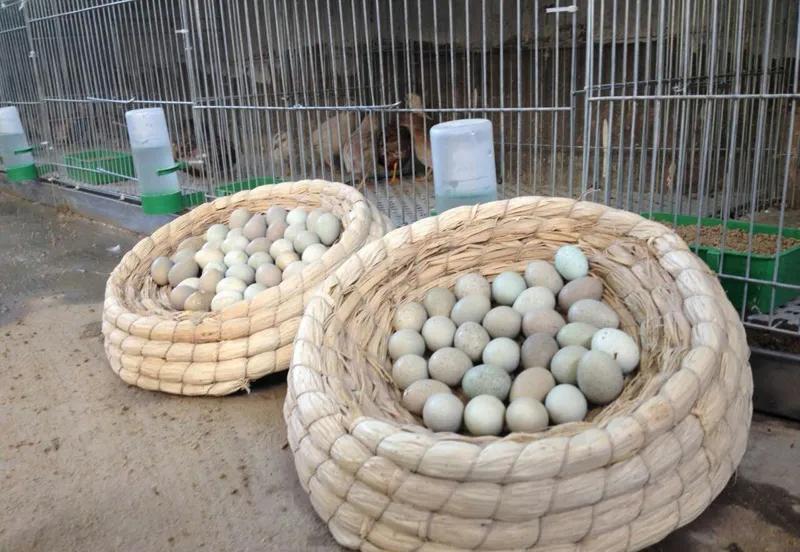Mastering each technical link in the incubation process is the key to improving the hatchability rate of rutin chicken eggs and obtaining the economic benefits of hatching, and the ten technical requirements for improving the hatchability rate of rutin chicken eggs are introduced as follows:

First, the selection of eggs should be careful
It is required that the freshness of the eggs should be high, the flower color should be good, in line with the requirements of no white skin, no soft skin, no trachoma, the egg weight is generally 5 to 7 grams, the egg shape is slightly pointed, the head is slightly round, and the diameter and cross-diameter ratio of the egg is 1:1.4.
Second, the eggs should be properly preserved
The egg storage room should be air circulated, and the harmful gases in the indoor room without mosquitoes and flies and rats should be below the specified health standards. Eggs should not be shaken, to prevent cold air blowing and direct sunlight, the temperature is about 18 ° C is appropriate. The egg storage time is 7 to 8 days in summer and not more than 10 days in winter.
Third, the egg disinfection should be thorough
In order to prevent the eggs from being infected with various bacteria and viruses, the eggs should be sterilized once before incubation. Place the eggs in the egg tray, upright or slightly tilted, with the head facing upwards, and place on the egg rack cart and push into the incubator for disinfection. The disinfection method can generally use formalin fumigation, the dosage is 28 ml of formalin per square meter, and the fumigation time is 20 minutes.
Fourth, the temperature should be appropriate
Temperature is one of the main conditions in the hatching production process, requiring relative stability at 37.8 ~ 39 °C. Due to the difference in embryo age, variety and season, its range can be adjusted appropriately. In general, the smaller the embryo age, the higher the temperature is required; with the increase of the embryo age, the decay temperature can be appropriately reduced. Egg varieties require low temperature, and combined use require high temperature; early spring hatching requires a slightly higher temperature, and then with the gradual increase of temperature, the incubation temperature can be gradually reduced appropriately. The temperature in the incubation chamber should be maintained at 20 ~ 25 ° C.
Fifth, the incubation humidity should be controlled
Humidity generally refers to the relative humidity in the incubation room. The magnitude of humidity should be adjusted with the different stages of development of the embryo and different physiological needs. At the beginning, the humidity should be maintained at 55% to 60% in the middle of the period in order to drain allicure fluid and amniotic fluid, its relative humidity should be reduced to 50% to 55%; in the later stage, to facilitate the chick rutin chicken shell, to prevent the villi sticking to the eggshell, its relative humidity should be increased to 65% to 70%. The method of increasing or decreasing humidity is mainly adjusted by increasing or decreasing the area of the water tray in the incubator and controlling the amount of water sprinkled in the room.
Sixth, ventilation should be timely
During incubation, the vent holes on the incubator should be gradually enlarged as the embryonic age increases. 8 days before incubation, 1 to 2 times each time, after 8 days, appropriately increase the number of ventilation. In the case of hatching in the incubator, the ventilation holes should be fully opened to facilitate the breathing of the chicks, otherwise, the embryos that are breaking the shell or the chicks that are just out of the shell will suffocate.
Seven, flip the egg plate should be timed
The position and angle of decay of the inverted eggs are mainly to heat the eggs evenly, promote the activity of the embryos and prevent the embryos from sticking to the eggshell. The incubator should automatically turn the eggs every 2 hours at an angle of 60 degrees, and stop turning eggs 2 to 3 days before the hatching.
Eighth, the egg testing technology should be skilled
During incubation, the eggs are generally tested twice, and the development of the embryo is understood through egg testing. Head shots can be performed 4 to 5 days after incubation. Egg test lamps are used to illuminate the eggs, the color of the fertilized eggs is red, and careful observation can see that the blood vessels are spider-shaped and have black eyes in the center; unenthrosted eggs have a large color of light transmission and eggshell color similar to the color of the eggshell. The second care should be carried out 10 to 13 days after incubation, at which time the eggs that have been suspended in embryonic development should be removed to avoid odor and pollution of the air in the incubator.
9. Ensuring a smooth hatching is also key
Eggs can hatch after 16 to 17 days after incubation, and if the temperature is relatively uniform, it can generally be released within 2 to 3 hours. In the stereocutter, due to the different levels and uneven temperature, the hatching time should be extended by one day and night. Once the chicks have dried out of their shells, they can be removed and placed in a preheated brood box for care.
During the incubation process, for those chicks that are difficult to shell, artificial shell breaking can be used to assist in childbirth. If the inner membrane is white, do not move when the blood vessels have not yet contracted, and then tear it when the inner shell membrane is orange, pull the hatch out, and then put it into the hatching tray to make it automatically come out of the shell.